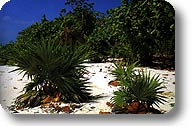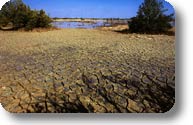|
Points of Interest
|
|
Ciénaga de Zapata National Park
|






|
It is the largest protected area in Cuba. Given its importance, it relies on qualified staff for its protection and management. The staff's headquarters are in EMA Victoria in Girón. The Park protected areas are Santo Tomás, the Salt Pan, and Río Hatiguanico. |
Santo Tomás
|
| It is one of the most significant areas protecting the natural habitat of the two endemic but endangered bird species: the Zapata Wren (Ferminia cerverai) and Santo Tomás Moorhen, and of the subspecies considered an endemic species of Zapata, the "cabrerito de la Ciénaga" (Torreomis inexpectata inexpectata). In the same area, a small population of "jutía enana" (Capromis nanus) lives, an endangered mammal according to IUCN. Moreover, also the Cuban crocodile and other reptiles and insects live exclusively in this area. An ecological station will be available soon: it has been financed by Parco dei Laghi di Avigliana with funds of Regione Piemonte, and has been dedicated to the famous naturalist Fermin Cervera, who first signaled the presence of the two endemic species named after him. |
The Salt Pan
|
| It is the other most important area of the Park and represents a real nature sanctuary for the Cuban avifauna. The system of brackish lagoons characterizing the salt pan offers shelter to over 65 species of migratory birds arriving in winter. During the migratory period (from October to March), the area is characterized by the "seviya" (Waia ajaia), the "cayama" (Mycteria americana), as well as by flamingos populations (Phoenicopterus ruber), a protected species at a world level for the reduction in the number of individuals observed in other Countries. During the migratory period, also the populations of herons and ducks grow in number. A population of Grus canadensis lives in the savannah, but it is difficult to observe it, both here and in other regions of Cuba. In the forest areas of the salt pan it is possible to observe the Plain Pigeon (Columba inomata), the Cuban Trogon (Priotelus temnurus), the Cuban Tody (Todus multicolor), reptiles like iguanas and several amphibians. |
Río Hatiguanico
|
| It is the most important area for the conservation of mangroves, thanks to the considerable extension of the river and channels, which are among the best preserved in the Caribbean islands. Moreover, the area is populated by the rare manatee (Trichechus manatus), an endemic but endangered mammal of the Caribbean. |

